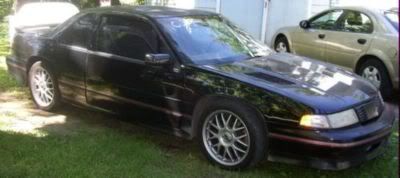I just bought a 1997 Oldsmobile Cutlass Supreme with 126,000 miles on it. I bought it looking pretty good but below the price I would normally expect.
When I first bought it it had the "Secuiry" light on and the "Low Coolant" light on. Within the first 24 hours I got a Service Engine Light with P0401 Reduced EGR Flow. Over the weekend I fixed the security light and disassembled the throttle body to clean a blocked EGR passage and cleared the P0401 code.
I also removed and carefully cleaned the Low Coolant Sensor and expected it to be fixed. Strangely enough, it flashed a steady pattern for a good long while and it slowly got faster before coming back on steady.
Tonight I got the P0420 Catalyst System Efficiency code. I might be kind of paranoid but I'm wondering if I'm seeing the signs of Lower Intake Manifold leak.
The oil has always looked fine and there's no clear sign of coolant loss at this point.
How much coolant needs to go through the exhaust to ruin the Catalytic Converter? Would I notice it?
How much oil needs to get in to the coolant to make the Low Coolant Sensor malfunction?
Should I wait and see what happens or should I go ahead and assume the worst?
Can mere mortals replace the Lower Intake Manifold Gasket or is professional help the only reasonable solution?
Thanks...
When I first bought it it had the "Secuiry" light on and the "Low Coolant" light on. Within the first 24 hours I got a Service Engine Light with P0401 Reduced EGR Flow. Over the weekend I fixed the security light and disassembled the throttle body to clean a blocked EGR passage and cleared the P0401 code.
I also removed and carefully cleaned the Low Coolant Sensor and expected it to be fixed. Strangely enough, it flashed a steady pattern for a good long while and it slowly got faster before coming back on steady.
Tonight I got the P0420 Catalyst System Efficiency code. I might be kind of paranoid but I'm wondering if I'm seeing the signs of Lower Intake Manifold leak.
The oil has always looked fine and there's no clear sign of coolant loss at this point.
How much coolant needs to go through the exhaust to ruin the Catalytic Converter? Would I notice it?
How much oil needs to get in to the coolant to make the Low Coolant Sensor malfunction?
Should I wait and see what happens or should I go ahead and assume the worst?
Can mere mortals replace the Lower Intake Manifold Gasket or is professional help the only reasonable solution?
Thanks...




Comment